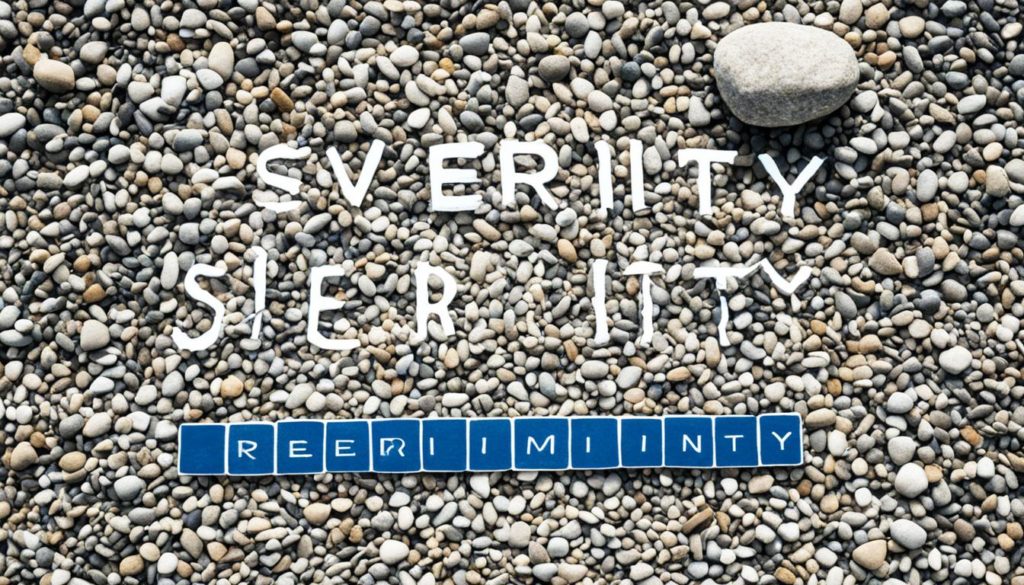
In 2021, the tech market saw a huge increase in unicorns, celebrated on LinkedIn with “rocket ship” and “fire” emojis. But in 2022, the mood changed, shown by the “crying CEO” meme that went viral. Now, in 2023, everyone is excited about AI influencers and new ChatGPT applications. This shows how important a Minimum Viable Product (MVP) is for startups.
The term Minimum Viable Product is now crucial for startups wanting to innovate and enter the market quickly. An MVP is the simplest form of a product that can be launched. It lets entrepreneurs test their ideas, get feedback from the first users, and prove their concepts work. The world of MVP Development is filled with success stories. Over 90 founders, including the brains behind Fave and Apiax, raised millions and entered their markets with this method.
The Lean Startup approach is all about simplifying, saving resources, and giving users value right away. Making an MVP means more than just creating something that works. It’s about making a product that’s easy to use, meets a direct need, and doesn’t have extra stuff. The feedback from these initial versions is key to grow wisely and keep the quality high.
Understanding current solutions and who you’re competing with is crucial in today’s market. The MVP process used by Linear shows how to focus on your audience, aim your product at specific users, and improve based on what users say. Eric Ries introduced these concepts in 2011. They’ve grown to stress the need for a product that pulls in users from the start and keeps getting better.
Key Takeaways
-
- The MVP is a crucial strategy for swift market entry and innovation.
- An MVP allows startups to test hypotheses and validate concepts with minimal resources.
- Creating an MVP involves focusing on core functionalities to deliver immediate value.
- Feedback from early adopters is vital for product improvement and scalability.
- Analyzing competitors and refining ideas is more important than sheer novelty in today’s MVP approach.
Understanding the Importance of a Startup MVP
Startup success often depends on how well a Minimum Viable Product (MVP) is used. Using key Lean Startup Principles, an MVP helps test a business idea’s core assumptions with few resources.
The importance of an MVP is in linking a new idea to a market-ready product. By focusing on essential features, startups can reach Product-Market Fit efficiently. This fit is key to meeting real customer needs.
Knowing the MVP strategy helps dodge risks like growing too fast or spending resources wrongly. By checking the main idea early, entrepreneurs can focus their efforts better. This leads to greater startups success.
An MVP lets startups get important user feedback. This feedback makes it possible to improve and change according to actual data. The product grows from what users really need, not guesses.
By following an MVP approach, startups can stop doing what fails and improve what works. This way, every step is towards reaching efficient product-market fit. It’s worth noting that 90% of startups don’t make it. An MVP greatly lifts the chances of success by focusing on early growth and the value offered.
To sum up the value of an MVP, look at these points:
-
-
- It lowers risks by checking main ideas before full development.
- It makes better use of resources and saves money.
- It allows for quick feedback to make the product better.
- It makes sure customers are considered from the start.
-
A good understanding of MVP strategy removes what doesn’t work, leading to steady and expandable growth. Entrepreneurs should remember that lean startup principles mean learning fast what succeeds and removing what fails. This greatly improves the chance of a startup’s success.
Steps to Build a Successful Startup MVP
Creating a successful MVP is more than just having an idea. It involves detailed MVP Design and careful planning. We’re here to help you turn your idea into reality. This starts with identifying the problem your product solves. Next, we choose important features, and then we test the MVP thoroughly. This ensures your idea is ready for the market. Follow these steps to create a solid base for your startup.
Identifying the Core Problem
The first step is Core Problem Identification. It’s crucial to define the problem your product will solve. By understanding this problem well, we can make a solution that really helps users. This focus is key to making an MVP that works.
Prioritizing Key Features
After knowing the core problem, we move on to Feature Prioritization. We apply the Pareto principle to choose features that solve 80% of the problem. Our goal is to keep things simple while offering a good user experience. This way, our MVP is easy to use and effective.
-
-
- Identify essential features that provide maximum value
- Avoid feature creep and keep the MVP streamlined
- Ensure ease-of-use and a strong value proposition
-
Building and Testing
Next, we focus on Rapid Prototyping, MVP Testing, and improving based on feedback. Talking to early users through surveys, interviews, and analytics is crucial. We adjust the MVP slowly, enhancing its quality. This prepares us to grow the startup successfully.
- Develop functional and value-driven prototypes
- Gather continuous feedback from early adopters
- Iterate and improve based on real user interactions
Benefits of a Lean Startup MVP
The lean approach to building an MVP is filled with advantages for startups. By focusing on core features and gathering early feedback, startups use time and resources wisely. This approach aligns with agile principles and yields real results, proving crucial for startup success.
Saves Time and Money
Cost and time savings are major lean startup benefits. Startups often overbuild their first product, wasting resources. A focus on cost-effective MVP development cuts needless spending on unproven ideas. This not only reduces waste but also speeds up getting the product to market. An MVP’s simple focus prevents over-complex designs, sticking to what’s necessary.
| Approach | Development Time | Cost Efficiency |
|---|---|---|
| Traditional Development | 12+ months | Low |
| Lean Startup MVP | 3-6 months | High |
Attracting Early Adopters
Engaging early adopters is another key lean startup benefit. By launching an MVP, we reach users eager to give feedback early. This strategy, as highlighted in lean startup MVP strategies, simplifies user experience and prevents feature overload. Their feedback lets us refine our product quickly to meet real needs.
Gaining Investor Confidence
Attracting investors is crucial for startups. An MVP shows there’s a market need, building investor trust. Startups often fail due to no market demand. By demonstrating strong market interest with an MVP, we make a compelling case to investors, decreasing risks. This strategy is in line with Agile methodology, embracing continuous adaptation and learning.
The Lean Startup MVP approach significantly benefits startups by reducing costs, drawing in early users, and building investor confidence. It lays the groundwork for enduring success.
Case Studies: MVP Success Stories
Many startups became successful by launching an MVP first. *MVP Success Stories* show us that starting small can lead to big success. They tell us how the earliest versions of products can grow into big companies. By looking at successful startups, we learn the best ways to grow a business.
Notable Startups with Winning MVPs
For example, Uber began with just three cars. It only had basic features but connected users to rides. This simplicity, along with the CEO reaching out to drivers, sparked their growth. Then, IMVU grew by using a simple ad strategy on Google. This got them to $50 million in yearly revenue by 2011.
Facebook’s rise from 2004 to a $16 billion IPO in 2012 is a lesson in market testing and updating the product. They got big by adding what users wanted and finding investors at the right time. Dropbox, on the other hand, grew its user base by encouraging existing users to bring in new ones. This strategy helped them gather over $1.1 billion in investments. Airbnb also shows how starting lean and being user-focused can attract big investments like their $600,000 in 2009.
Lessons Learned
These stories teach us a lot. For example, Uber’s choice to accept only credit cards early on shows the power of updating your product. Facebook shows that getting investment at the right time is key for growing a startup. These stories all highlight understanding the main issue your product solves.
Dropbox shows that making your users part of the growth plan can lead to success. By involving customers early, companies validate their market and set up for more development. For any startup looking to grow quickly, these are crucial lessons.
| Startup | Milestone | Investment Rounds | Revenue |
|---|---|---|---|
| Founded in 2004, IPO in 2012 |
|
$12.47 billion (2014) | |
| Dropbox | Referral program fueled viral growth | Raised over $1.1 billion | $240 million (2001) |
| Uber | Started with just 3 cars | Initial self-funding effort | N/A |
| IMVU | Used $5-a-day Google Ads | N/A | $50 million (2011) |
Conclusion
Creating a Startup MVP is key in the world of entrepreneurs. It lets us test our ideas, get early followers, and impress investors. By doing this, we save resources and quickly improve with feedback from customers.
Our article showed the need for a solid MVP plan for a smooth start in the market. Learning from real-life cases teaches us about successful strategies. It shows staying focused and flexible is crucial. We must keep up with what users want and how the market shifts.
The MVP strategy is a core part of starting a business. It gives a detailed plan that lowers risks and prepares us for growth. With this method, we follow tactics that work and prepare for success. Let’s use these strategies to make our ideas come to life and stand out in the market.
FAQ
What is a Minimum Viable Product (MVP)?
An MVP is a simple version of a product. It lets a startup test ideas and get feedback fast. This approach helps solve basic issues using few features, saving resources.
Why is an MVP important for startups?
MVPs reduce risk and help avoid big mistakes early on. They focus on proving the main ideas and learning quickly. This method greatly improves chances of success by finding a strong fit between the product and the market early.
How do we identify the core problem for our MVP?
To find the core problem, know your audience and their main issue. Doing market research and talking to customers helps. This helps create a clear problem for your MVP to solve.
What are the key steps in prioritizing features for an MVP?
Pick features that best solve the most important problem. The Pareto principle helps choose few features that provide the most value. This keeps the solution simple while solving the main issue well.
How do we test our MVP effectively?
Test by getting feedback from early users through surveys and watching how they use it. Learn from their experiences and make changes. Quick updates and constant improvement are key to refining your MVP.
What are the benefits of a lean startup MVP approach?
The lean MVP approach saves time and resources by concentrating on what’s essential. It helps attract early users who give valuable insights. Showing you have tested ideas boosts investor confidence.
How can we attract early adopters for our MVP?
Draw in early users by focusing on their needs. Keep in touch with them and make them feel part of your product’s journey. Their early feedback is crucial and can help spread the word about what you’re building.
Why is investor confidence important for an MVP?
Winning investor confidence matters because it brings in funds for growth. Having a tested MVP with interested users makes investing less risky. It shows you’re serious and ready to scale.
Can you share some notable MVP success stories?
Sure, companies like Airbnb started with a simple MVP that focused on user needs. They improved their product based on user feedback. Their success shows how vital the right product-market fit and starting lean are.
What lessons can we learn from successful MVPs?
Successful MVPs teach us to tackle the main problem first and adapt based on user feedback. They show the power of starting small, staying focused, and scaling with care.
Future App Studios is an award-winning software development & outsourcing company. Our team of experts is ready to craft the solution your company needs.










